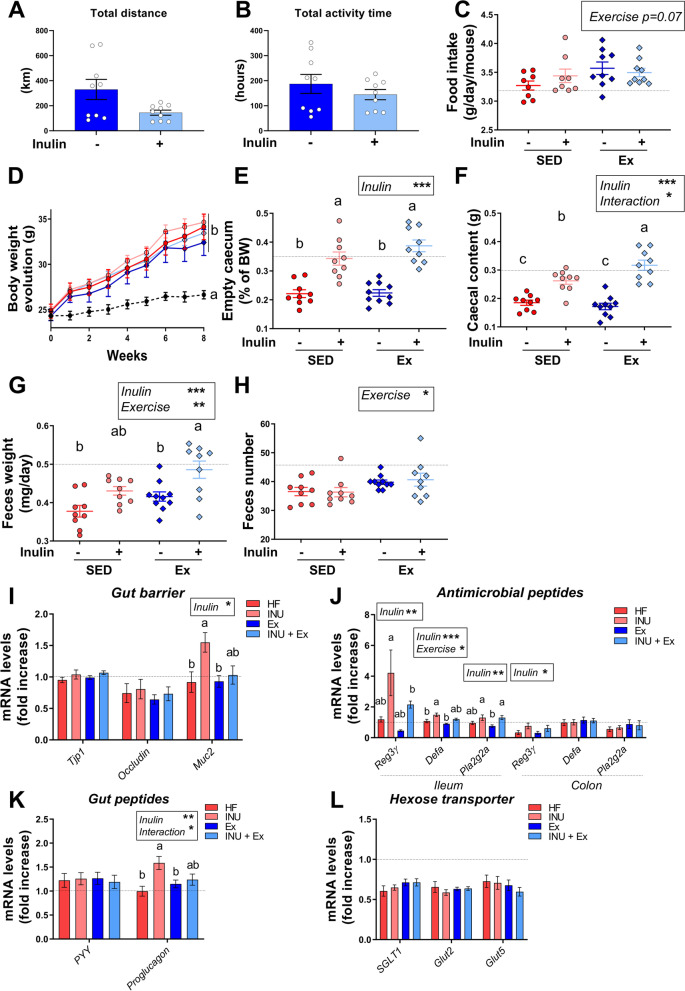Fig. 3.
Impact of PA and inulin supplementation on gut transit and intestinal physiology. A, B Total distance and total activity time, performed by mice, are indicated in km and hours, respectively, in the two groups receiving a running wheel (Ex and INU+Ex groups). C Daily food intake in grams per mouse. D Body weight evolution in grams all along the experiment. E, F Cecal content and tissue weight. G, H Feces weight and number collected during a period of 24 h. I Gene expression of gut barrier markers measured by qPCR in the colon. J Gene expression for antimicrobial peptides markers measured by qPCR in both ileum and colon. K Gene expression measured by qPCR in the colon. L Gene expression for hexose transporter markers, measured by qPCR in the jejunum. For each panel, data are expressed as means ± SEM per group. The black dotted line represent the mean obtained for the control group fed with a standard diet. For the other four groups fed with a high-fat diet, a two-way ANOVA was performed and results for each variables (inulin, exercise or interaction) are shown in the box when significant. A Tukey post hoc test was also performed for comparison between groups and a different letter was attributed when the groups exhibit significant differences

